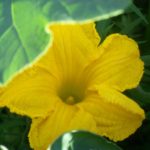
Flax Adventure
In January I set a goal to grow and process flax for fiber – as in fiber for linen. I don’t think I could be any happier with how this project turned out. My last blog post brought you up to date with the adventure. I had just harvested, dried, and begun soaking the flax stalks in water (retting). The water and bacteria help dissolve some of the wooden core.
Success
Because I am a flax retting novice, I was unclear of exactly when the retting process was complete. After day five, I began testing the stalks which involves snapping them to look for fibers. I had expected the stalks to swell more in the water, but they were almost the same spindly size as when they went into the tub. There were a few days when I was sure something had gone wrong and perhaps I had planted the wrong seeds. Then on day eleven, when I cracked the stalks, the fibers emerged.

It’s hard to explain how exciting this was. Hidden in these slender stems was the fiber that our ancestors discovered to create fabric. I had done it! And was now a member of this ancient club of humans who have harvested flax for fabric. I immediately texted a picture to my friend Cheryl, a weaver, spinner, and fiber expert, because I knew she would get my excitement. To even for a few moments enter into a space of first discovery is a joy. Obviously, this was not the first discovery of fiber ever, but it was a first for me and was exhilirating.
Releasing the Fibers
The flax had to dry again before processing, but once dry, it was time to begin releasing the fibers in earnest. Breaking is the next step of snapping the stems and setting the fibers free. The stalks are snapped, the woody core drops away, and the threads of fiber can be easily seen. There are tools that can be used for processing large quantities of flax, but I am doing this by hand, which is of course how it all got started.
The whole process is deeply satisfying – The rough feel of the stalks contrasted with the soft fiber, the crackling sound of snapping stems, and watching the silky fiber almost magically manifesting from the plant. At some point thousands of years ago, somebody first pieced this together and working with this plant allows me to resonate again with that first discovery.

Because some of the dried core clings to the fiber, there are a few more (oddly named) steps to cleaning the fiber – scutching and hackling. Scutching involves beating and scraping the fibers with a wooden tool to release more of the dried stem. Hackling involves pulling the fibers through a kind of metal comb. But here’s the thing, when our ancestors started this process none of those tools existed. The cleaning took place by hand, by pulling out the stemmy pieces, and that’s basically what I am doing.
So Now What?
I am still cleaning flax. It is a time consuming (but relaxing) process. And I know I have the privilege of approaching this as a fun project rather than as necessity for making clothes for my family. My plan is to make a wall hanging or other decorative creation with the fiber.
Next summer’s garden is already in the planning stages with more flax and an attempt to harvest nettles for fiber as well.
 I am thankful for the joy this project has given me, especially in a rather challening year. My hyper focus on the flax plants allowed me to tune in and be present so that the moments of first discovery were possible. In truth, with focus and attention, we can enter into a place of wonder and first discovery in the garden on a regular basis. It’s a matter of cultivating seeing the world with fresh eyes and being open to our connection to all the gardeners who went before us. We can, if we try, resonate with their energy and joy of first discovery.
I am thankful for the joy this project has given me, especially in a rather challening year. My hyper focus on the flax plants allowed me to tune in and be present so that the moments of first discovery were possible. In truth, with focus and attention, we can enter into a place of wonder and first discovery in the garden on a regular basis. It’s a matter of cultivating seeing the world with fresh eyes and being open to our connection to all the gardeners who went before us. We can, if we try, resonate with their energy and joy of first discovery.




Your excitement was contagious as I read this post. Thank you for sharing your flax journey. Focusing on one plant really opens the heart. Look forward to seeing your flax creation. Thanksgiving indeed💛
Susan, I am glad that came across. It’s been very cool! Happy Thanksgiving!